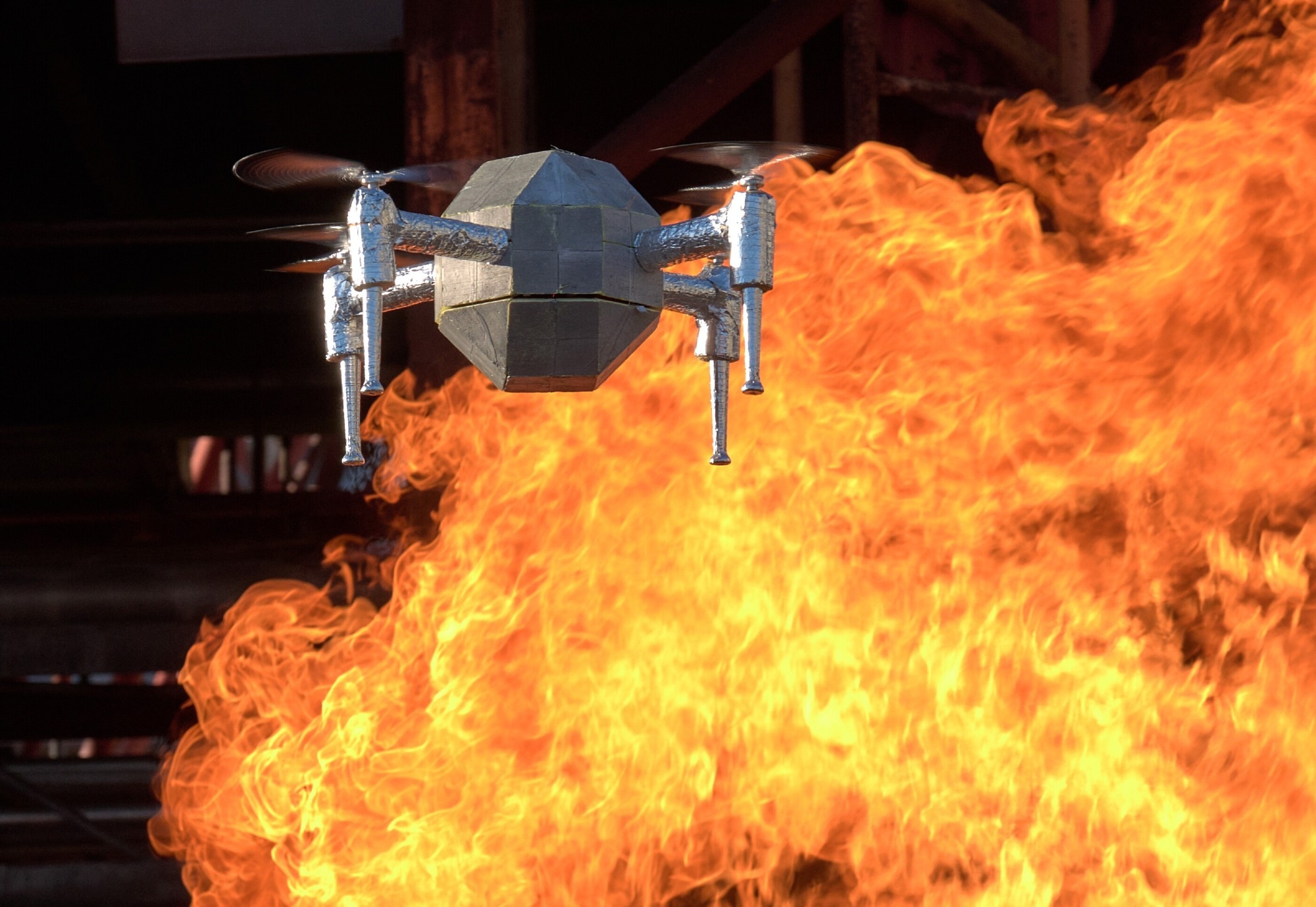
Image Credit: Imperial College London.
The so-called FireDrone, known as the prototype drone, can be sent into burning woodland or buildings to evaluate threats and offer vital first-hand data from danger zones. Further, the data would be transmitted to first responders to aid in informing their emergency response.
The drone has been composed of a new thermal aerogel insulation material and has an inbuilt cooling system to help it resist temperatures ranging to a maximum of 200 °C for ten minutes. Presently, at the prototype stage, the scientists hope FireDrone could ultimately be utilized to inspect fires for people and additional threats to strengthen firefighting.
Until they enter the danger zone, firefighters can’t be certain of what or who they’ll find, and what challenges they’ll encounter.
Mirko Kovac, Study Principal Investigator and Professor, Director, Aerial Robotics Lab, Imperial College London
Kovac added, “FireDrone could be sent in ahead to gather crucial information – noting trapped people, building layouts, unexpected hazards – so that responders can prepare accordingly to keep themselves safe and potentially save more lives.”
Kovac is also the head of the Laboratory of Sustainability Robotics at Empa.
Animal-Inspired Trailblazers
Already, drones are utilized from a distance in firefighting to hoist fire hoses up skyscrapers, take aerial footage, or drop fire retardant in remote areas to retard the wildfires’ spread. But, existing drones designed for firefighting are incapable of flying much closer as their electronics fail and their frames melt.
Depending on interviews with firefighters, the scientists realize drones that could get much closer have the potential to aid in preparing the first responders to enter burning woodland or buildings. Drones fitted with carbon dioxide (CO2) sensors and cameras, for instance, could offer vital data regarding the layout and composition of fires.
The researchers looked to animals that resist extreme temperatures similar to the arctic fox, penguin, and spittlebug, for inspiration. All these have proper layers of fur, and fat, or produce layers of thermoregulating material that enable them to flourish in extreme conditions.
For the drone to be designed, the researchers made a protective structural shell made of lightweight and thermally super-insulating materials like glass fibers and polyimide aerogel.
It was coated with super-reflecting aluminum for heat to be reflected. The super-insulation prevents the shrinkage of materials and pore structures from degrading after exposure to high temperatures.
Inside the protective exoskeleton, temperature-sensitive components, like regular and infrared cameras, video transmitters, radio receivers, batteries, CO2 sensors, and flight controllers were placed. Also, they utilized the release and evaporation of gas from the CO2 sensors to construct a cooling system to retain the temperatures down.
Temperature Extremes
The drone was tested by the researchers in temperature-controlled chambers and then flew close to flames at a firefighter training center. They believe that their additional work to miniaturize and add more sensors to the drone may result in its deployment in real-life firefighting missions and also can be useful to save lives.
Furthermore, FireDrone could be utilized in extremely cold environments, in glaciers and polar regions. Also, the team tested the robot in a glacier tunnel in Switzerland to learn how the system acts in highly cold temperatures.
Even though FireDrone is at the prototype stage, the scientists say it is a step ahead for the development of other drones. It can resist extreme temperatures and the team is currently validating the technology with significant industrial stakeholders and collaborators.
The application of drones is often limited by environmental factors like temperature. We demonstrate a way to overcome this and are convinced our findings will help to unleash the future power of drones for extreme environments.
Mirko Kovac, Study Principal Investigator and Professor, Director, Aerial Robotics Lab, Imperial College London
Kovac added, “Deploying robots in extreme environments provides great benefits to reducing risks to human lives, and who better to look to than animals that have evolved their ways of adapting to these extremes using inspirating from how animals keep cool in heat.”
Journal Reference:
Häusermann, D., et al. (2023) FireDrone: Multi-Environment Thermally Agnostic Aerial Robot. Advanced Intelligent Systems. doi.org/10.1002/aisy.202300101.